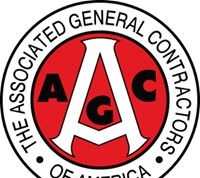Can Vacant Land Be Used As an Investment Property?

If you are used to investing in residential and commercial real estate, vacant land may seem like an unfamiliar proposition – but it could make an excellent addition to your portfolio.
However, financing vacant land may be more challenging; lending institutions tend to loan a lower percentage of value when providing financing for undeveloped property than for developed ones.
It’s Cheaper
While purchasing pre-built homes or commercial properties may make financial sense, vacant land can often prove more affordable and provide real estate investors with opportunities to capitalize on market trends while simultaneously enjoying reduced investment costs.
Zoning laws play a huge role in whether or not you can build on your land, which is why it’s essential to do research on any area before purchasing vacant plots. Make sure it has access to electricity, gas lines and sewers or has wells with septic systems installed; or else be prepared to shell out money to have these utilities brought in yourself. You can visit this site for more information on zoning laws.
Consult a surveyor about the boundaries of your lot. Since vacant land may not have as clearly-defined boundaries as an already built house or commercial structure, and could cause issues between neighbors should your plans for the site become known to them, it’s best to seek professional guidance prior to making any plans public.
Obtaining financing for undeveloped land can be more complex than for finished homes or buildings, as banks usually require higher down payments and provide less of its value in loans without physical structures as collateral. You’ll also lose any ability to claim depreciation on it come tax time. You can click the link: https://www.irs.gov/pub/irs-pdf/p946.pdf for more information on depreciation.

It’s More Flexible
Vacant land offers investors more flexibility than finished properties, enabling them to tailor it specifically to their individual needs and market demand, which makes it a sought-after investment option. Unfortunately, though, it also comes with its own set of risks that should be taken into consideration before making your decision.
Consider whether the vacant land possesses all of the infrastructure needed for development, depending on your desired location. Road access or installation of utilities such as water and sewage could add significantly to its cost; this factor must also be taken into account.
Additionally, when purchasing raw land it may be necessary to pay additional permits or application fees that aren’t typically included in the sale price of finished properties. These expenses may add up over time.
If the land you’re considering is part of a subdivision, homeowner’s association rules could apply; these guidelines could dictate everything from how often to mow the lawn to where to park your vehicle.
If you’re willing to put in the time and effort, investing in vacant land can be an excellent way to diversify your portfolio and increase wealth. For example, you can buy vacant land in Rio Rancho and develop it to suit your own needs. Be sure to do your homework when choosing your plot, consulting with professionals such as architects or landscapers so as to avoid unexpected risk factors and ensure it fits with what your intentions are for the property.
It’s More Valuable
People often associate real estate investment with residential or commercial buildings such as single-family homes, apartment complexes, retail stores, warehouses or offices; however, vacant land can also be an excellent way to diversify. While it may not generate immediate cash flow immediately, over time it could still become an invaluable long-term asset.
Furthermore, vacant lots may provide temporary relief by being rented out to seasonal businesses such as pumpkin patches and Christmas tree farms while you wait for the right moment to build.
Not only is buying and building on raw land costly, it comes with additional expenses like land clearing, grading and environmental testing costs – plus utilities if it doesn’t already include them!
Investment in vacant land can be an ideal way for those willing to devote the necessary time and resources in developing it. Working with landscapers, architects, and home or commercial property builders as part of your team of professionals can assess a lot before purchase and help determine if its potential matches up with your goals for investment purposes.
You can monetize it
Vacant land can be utilized in multiple ways.
Building a Home
One of the easiest and most lucrative ways to profit from vacant land is through building either single- or multi-family houses on it. Once constructed, these houses can either be sold later at a profit, or leased out as monthly rentals to generate ongoing monthly revenue streams.
Planting Timber
If your land contains trees, harvesting them for wood can be an excellent source of revenue. You could sell or use the wood in building projects; just remember that too much tree cutting is harmful for the environment – so a better approach may be to find an alternate solution to address this issue.
Hosting a market day
A great way to monetize your land in busy areas, hosting market days like farmer’s markets or flea markets on it and charging an entry fee could be the perfect way to monetize it.
You can utilize one of these techniques or add them together, changing the use of your property as the development changes.
Although it may take more time to make money on vacant land, the payoff can be well worth the investment. Be sure to research any land thoroughly in order to ensure you are going to be able to use it in the way you plan.














